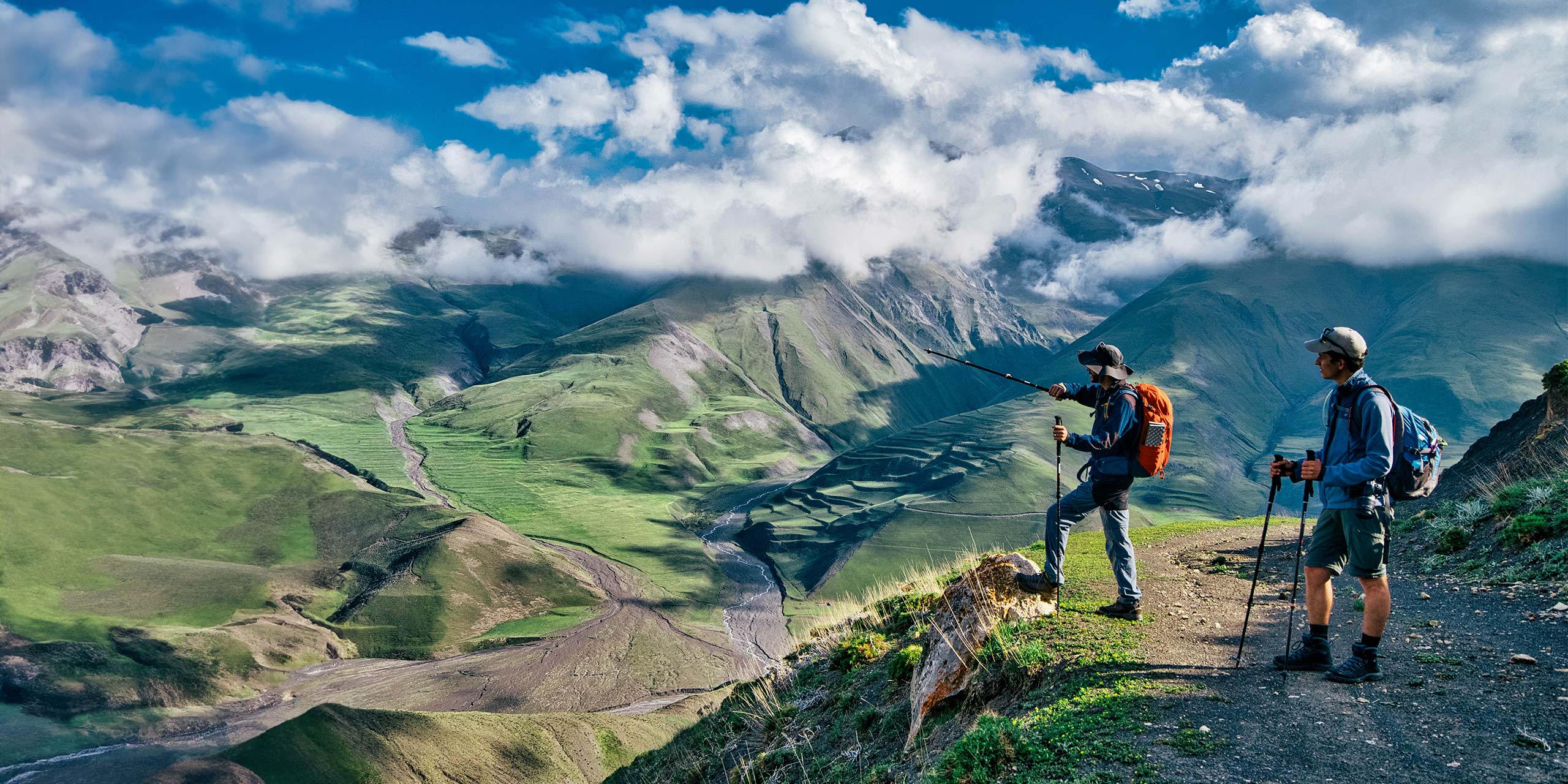
“Guys….. stay right there!” I shouted at the top of my voice, my words echoing around the majestic Caucasus peaks in Quba District in Azerbaijan.
This was a photo opportunity not to be missed. My guides, Mursal and Aboo, took up position along the hiking trail just as two blankets of clouds rolled towards their heads and another swept in the opposite direction below their feet.
I retrieved my camera from my backpack but found it lifeless with a flat battery. Frantically, I reached for a replacement, swiftly inserted it, and glanced back up.
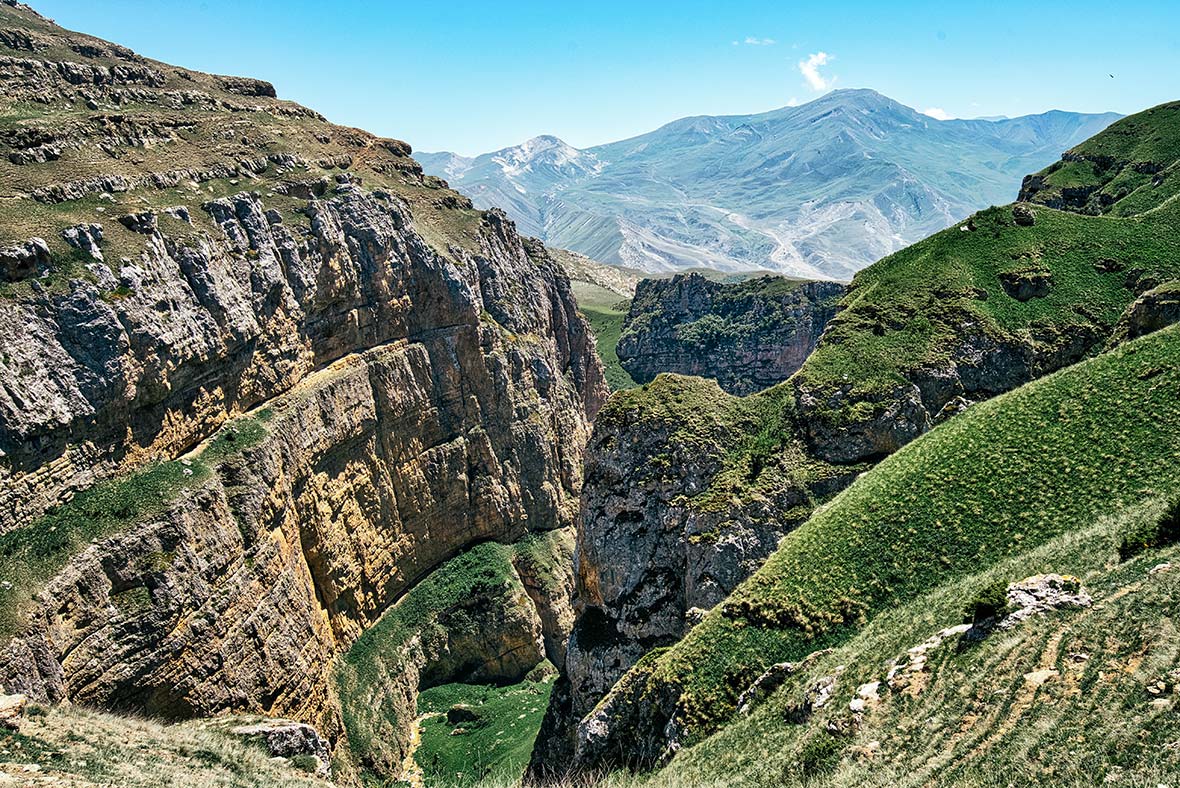
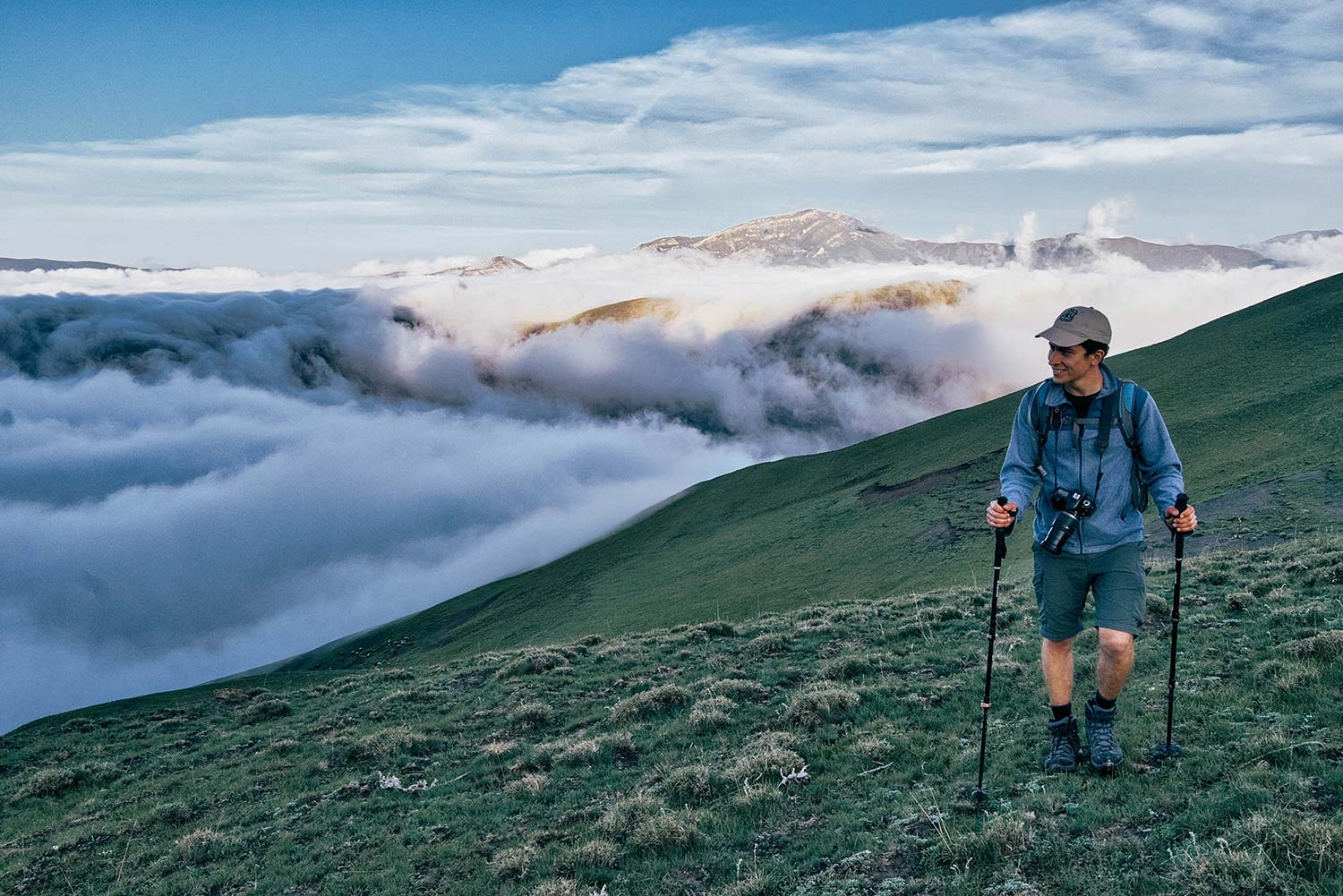
Suddenly, Aboo’s voice pierced through the mountains, “Pete, where are you?”
“I’m still here, but I can’t see a thing”, I responded. As the clouds dissipated, I was reunited with my two companions and met with the vision of lush green mountains and a large canvas of blue sky.
Azerbaijan, a nation woven with threads of spiritual traditions and diverse cultures, is replete with mystic potential. Sandwiched between the Caspian Sea and the Caucasus Mountains, it has been a melting pot for Persian, Turkic, and other civilisations along the historic Silk Road for millennia. Of particular note were the mysterious fire-worshipping Zoroastrians who came to Azerbaijan over 2500 years ago.
In this ancient faith, fire serves as a sacred pathway, bridging the spiritual and physical realms, allowing believers to connect with God and seek protection from dark forces.
We arrived to find Khinalig under brooding clouds and drizzle after a three-day drive from Azerbaijan’s glitzy capital, Baku, for the start of my four-day trek. A cluster of centuries-old stone dwellings clinging to a narrow ridge, surrounded by some of the highest peaks in the Greater Caucasus.
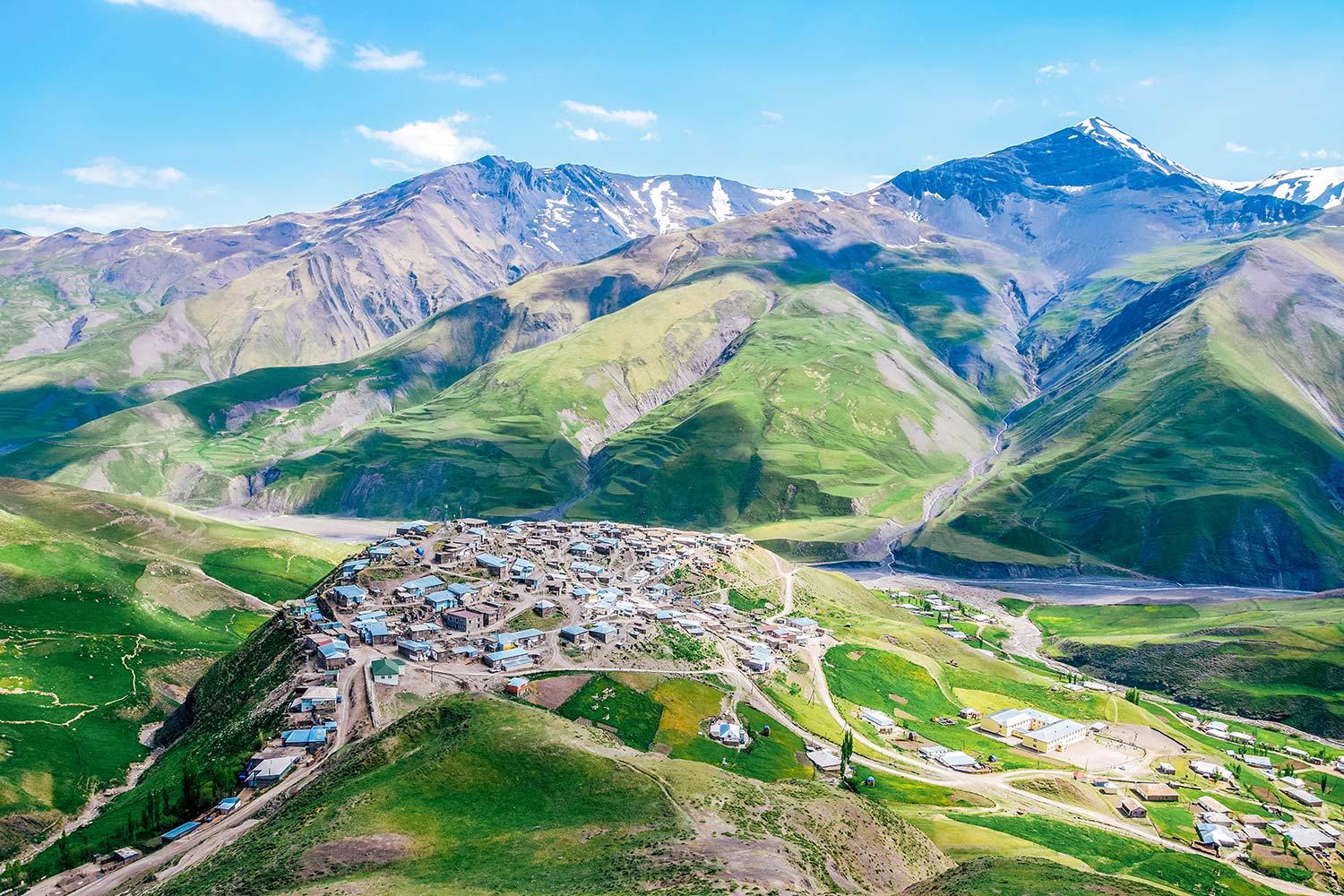
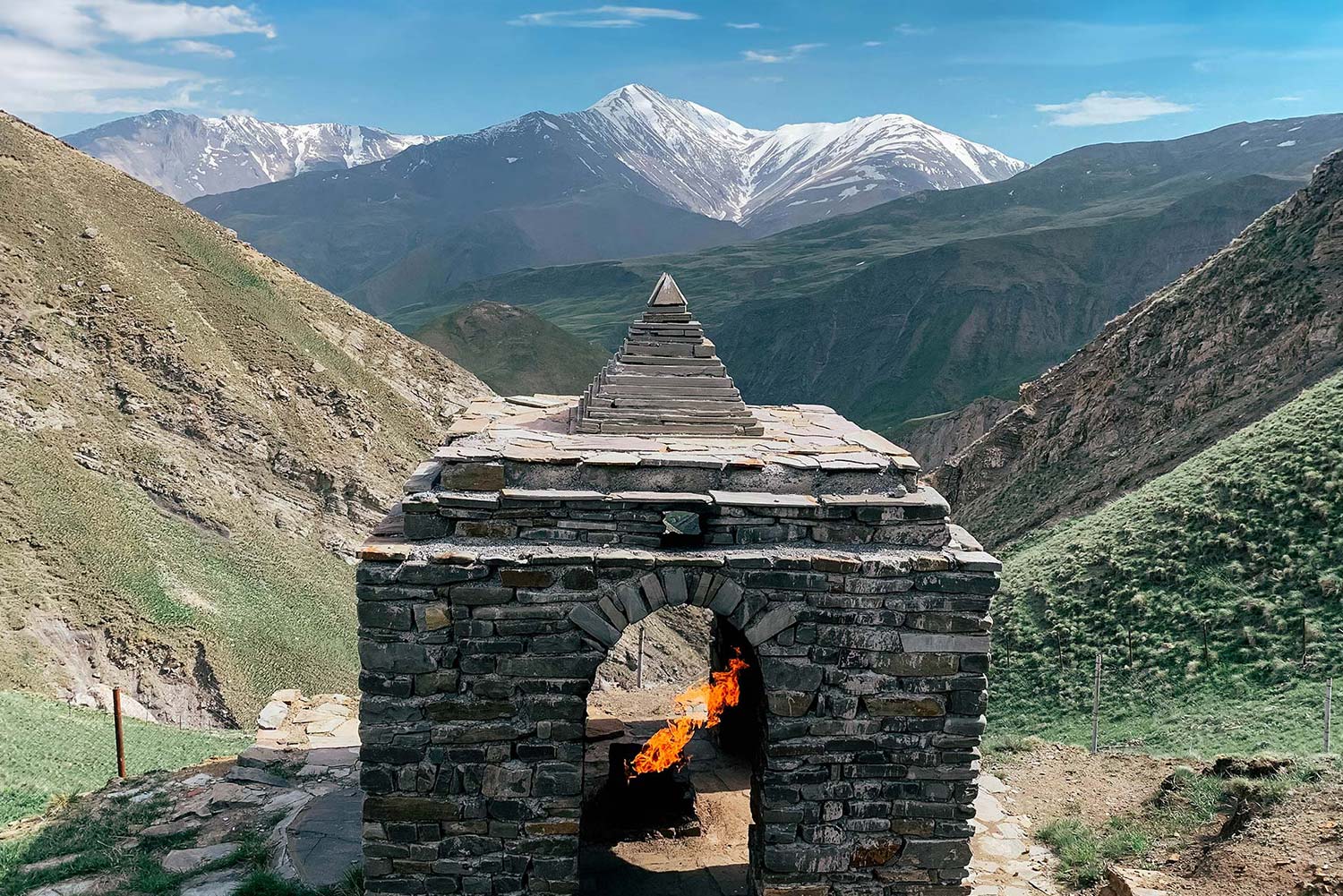
Khinalig is one of Azerbaijan’s oldest villages, dating back over 5,000 years. It’s easy to understand why this settlement is cut off during large parts of the year. The high mountains, dangerous rocky cliffs, and heavy snow render the settlement inaccessible.
Due to the isolation, the villagers developed and preserved their unique language. “We speak Azerbaijani to the locals; I cannot understand them otherwise”, Mursal said. Aboo added, “Their traditions, customs and language are found nowhere else in the country.”
Leaving Khinalig behind for our next village stop at Galakhudat, I felt transported into another world. Along the marked trail, the vista is a blissful mix of verdant scenery and snow-capped mountains with fresher temperatures than Baku.
Covering only five miles, we were treated to a glut of Azerbaijan’s most magnificent topography, from Gizilgaya’s chalky cliffs to terraced farmlands and the expansive Gudyalchay valley, tinted dozens of shades of green.
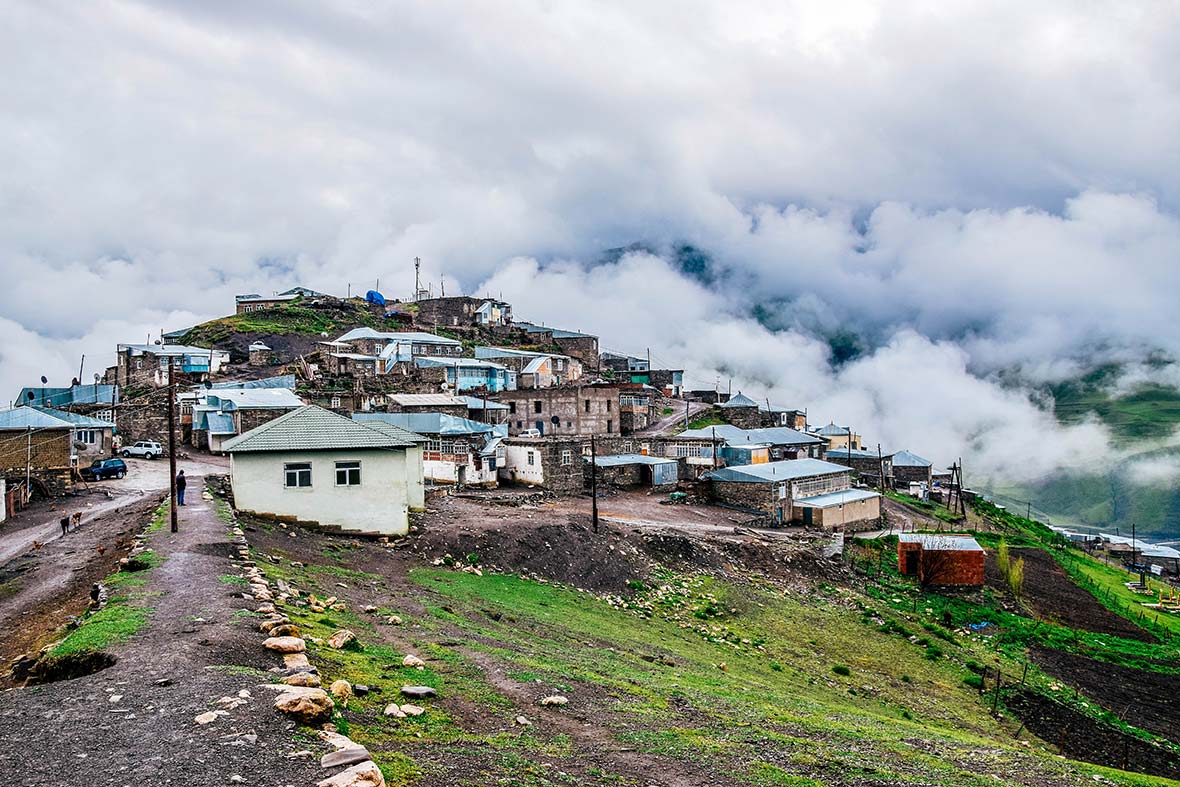
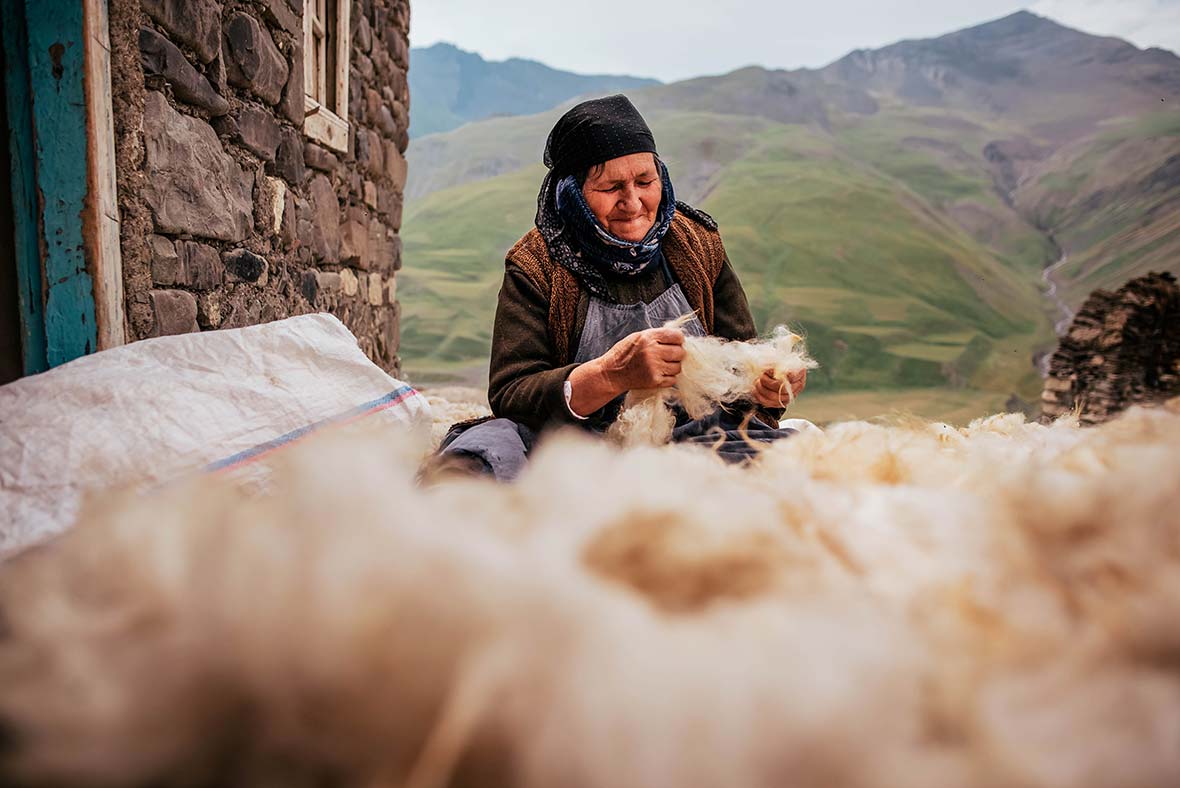
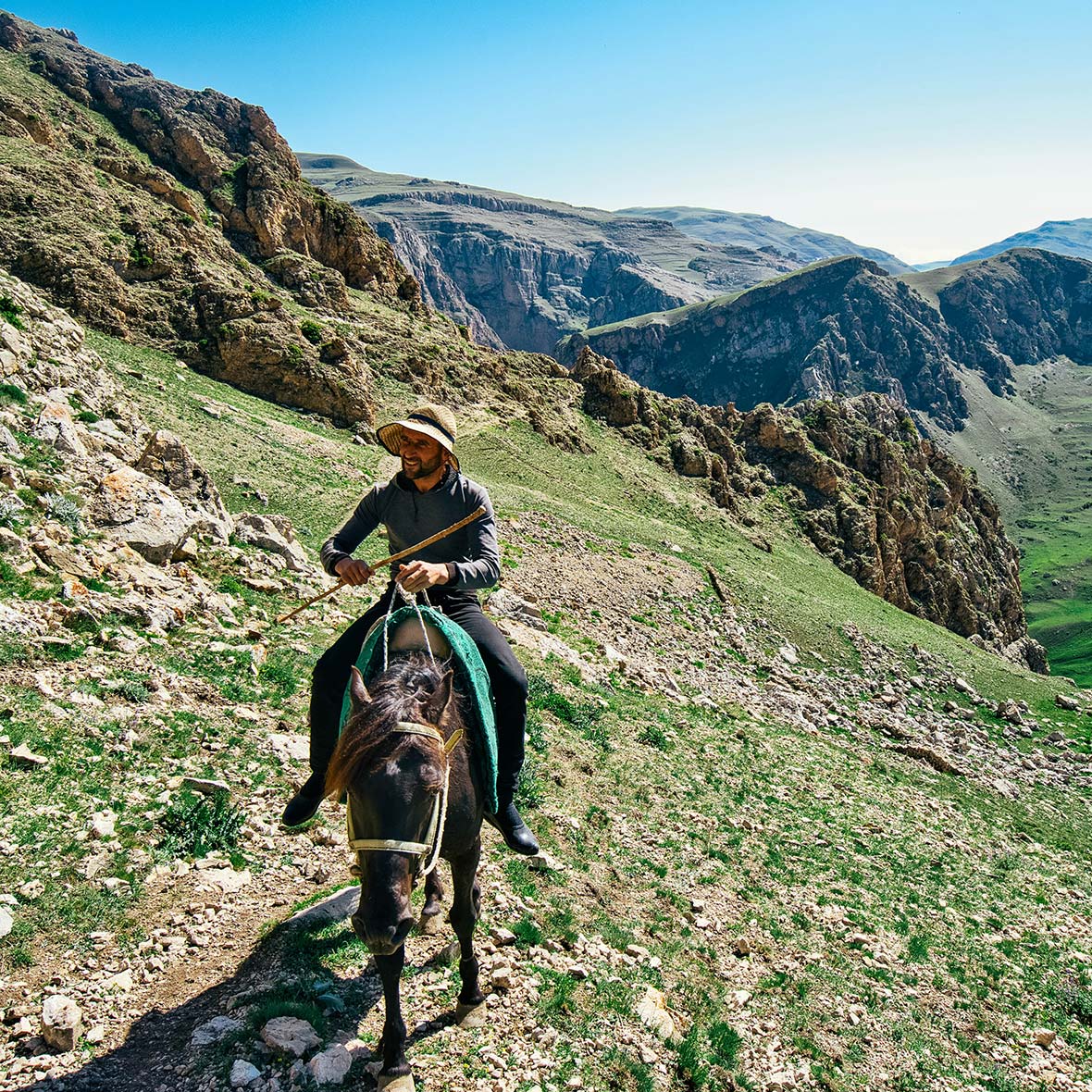
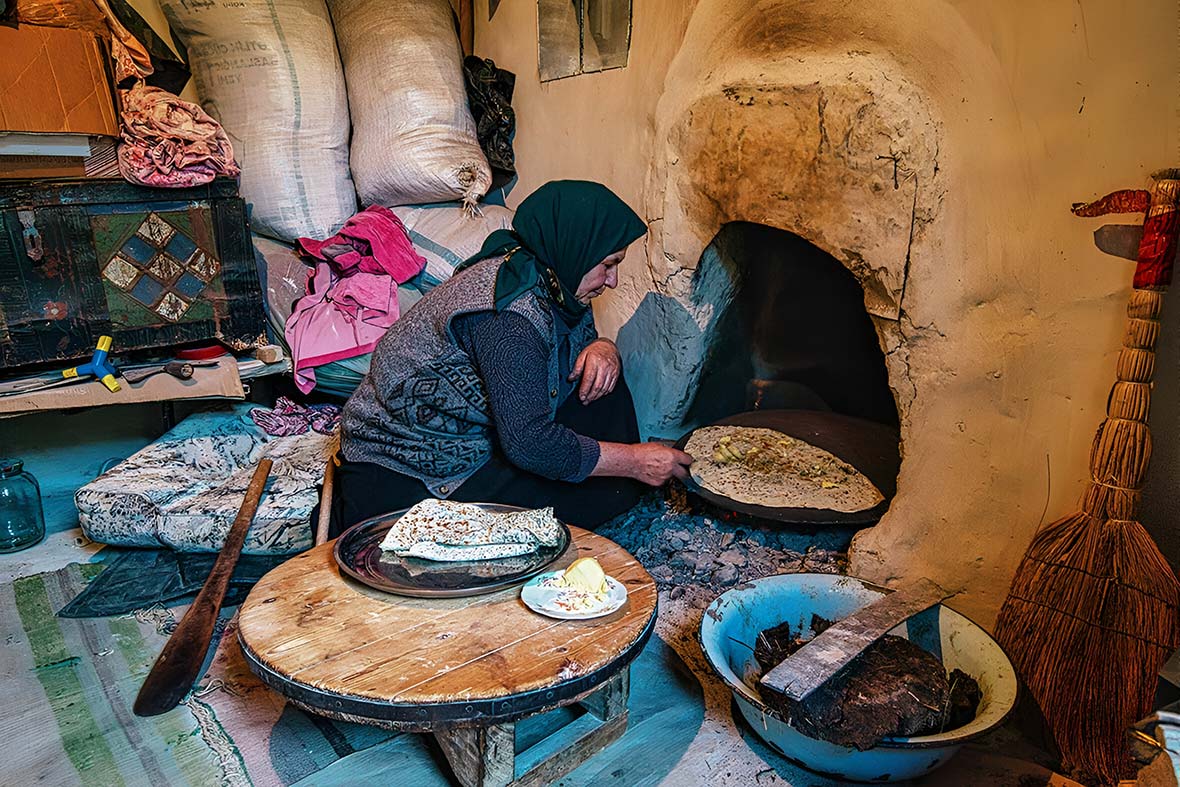
The day’s big highlight came at Bazarduzu, Azerbaijan’s tallest peak at 4,466m. As we ascended, I could see clusters of puffy white clouds forming from different angles, even below us. We then entered the clouds, Mursal, Aboo and myself taking turns to vanish momentarily only to reappear in the bright sunlight.
This happened several times, and on the last occasion, a whistling shepherd emerged from the foothills below. This moment they captured the timeless essence of the Caucasus perfectly. There are no modern distractions; the internet, coffee shops, and car parks lie way beyond the mountains.
When we reached our first pitstop in the village of Galakhudat, we were welcomed by shy and smiling children and the father of the house, who brought us tea, hot lavash flatbread direct from the oven, white salty cheese, tomato, cucumber, pickles and delicious cranberry juice.
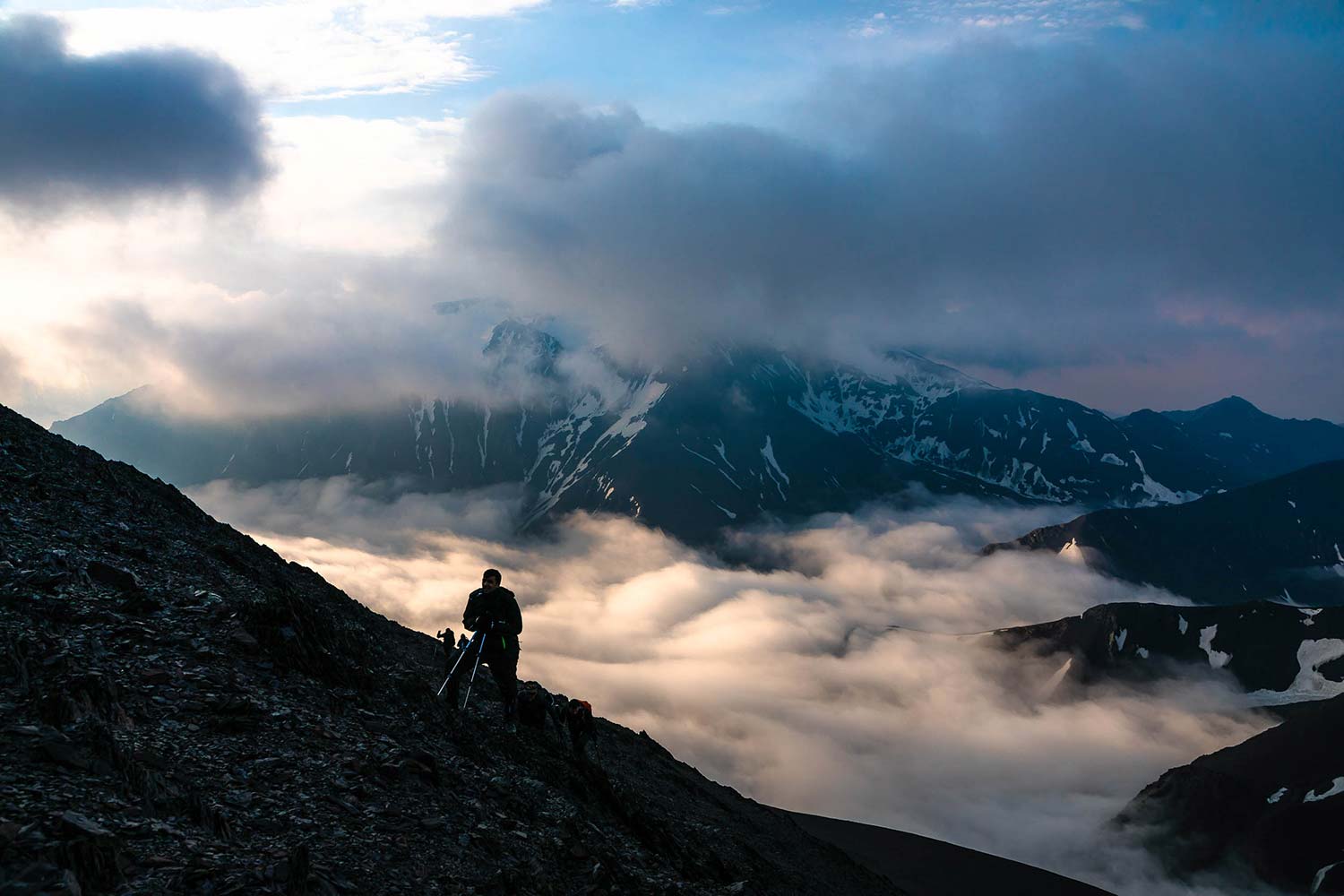
These ubiquitous small plates can act as starters or side dishes to most main meals. We were then served aromatic lamb accompanied by boiled potatoes and green peppers. The dish was a generous feast, more than we could manage.
Our homestay was clean and comfortable, with plenty of beautifully patterned rugs on the floors, giving the home a cosy feel. After a long day, we were ready for bed, and despite the unsettling weather in Khinalig, our spirits were upbeat, and I was looking forward to starting our hike.
Day two began with us suddenly arriving at the edge of a vast canyon, where I paused to admire an imperious vulture gliding effortlessly and close enough not to require binoculars. Four different vulture species inhabit this part of Azerbaijan alongside other birds of prey and regional rarities like the Güldenstädt’s redstart.
Having crossed the canyon, a few more hours of moderate to challenging walking followed through breathtaking scenery—deep valleys, forested foothills and never-ending mountains—until we arrived in Griz, another charmingly rustic mountain village populated by a distinct ethno-linguistic community.
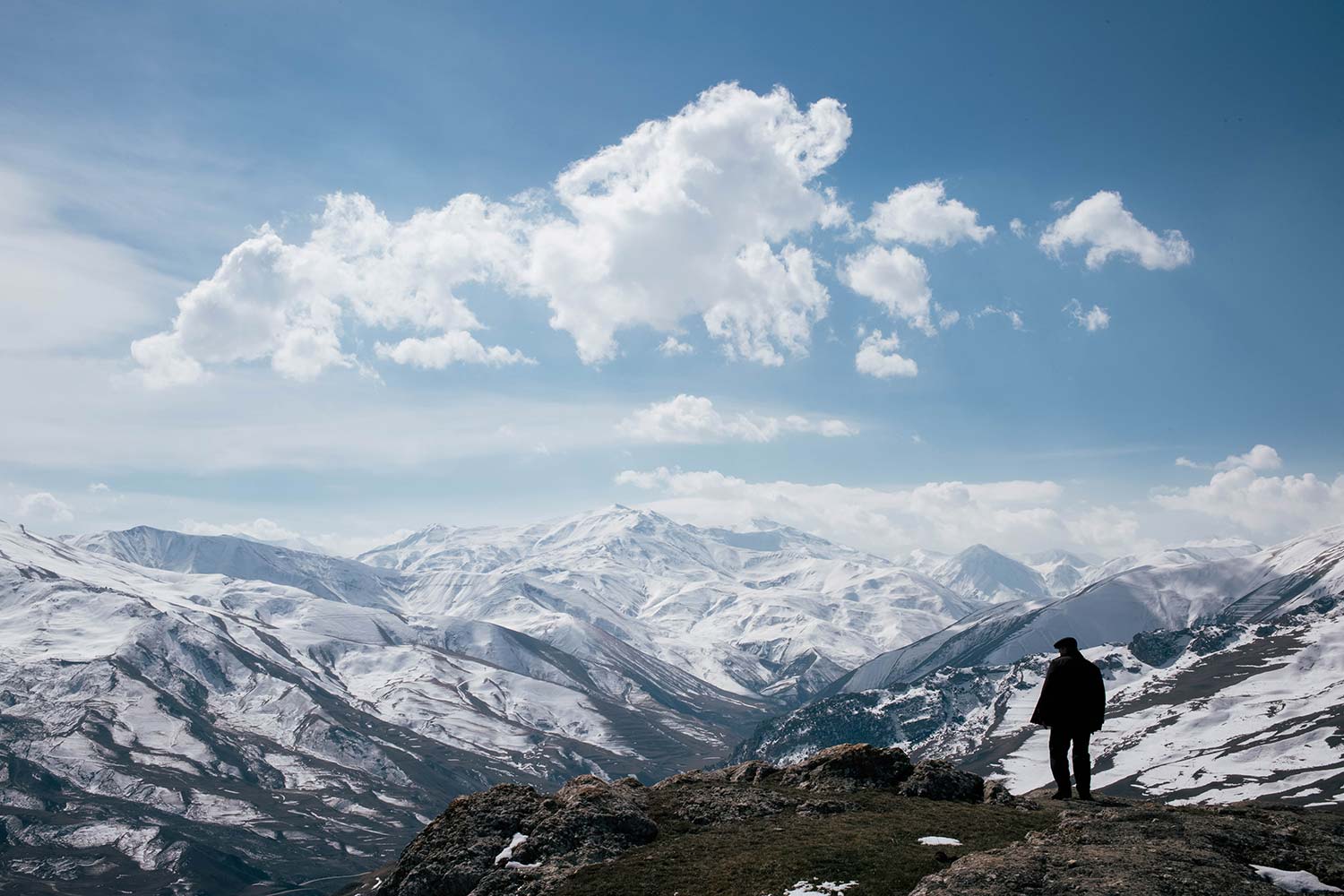
The remains of Griz’s medieval fortress, 8th-century mosque, countless gravestones, and hobbit-like abodes give the place a period drama film-set feel. Thankfully, Netflix and Co. were not here, nor were any tourists. However, when I walked to the village’s plateau to view the tall cliffs and exhilarating valley, I felt an excruciating pain in my left ankle.
An hour before reaching Griz, I slipped and fell on my ankle. Despite the initial pain, I didn’t dwell on it. However, the swelling and discomfort intensified near our Griz Homestay.
After a sleepless night, I needed assistance from Mursal and Aboo to walk, as I was unable to put pressure on my left foot. The guides arranged a 4×4 jeep to transport me to the district hospital. The X-ray revealed a twisted ankle with minor ligament damage. Tragically, we missed the challenging Griz to Laza route, which would have taken around seven hours.
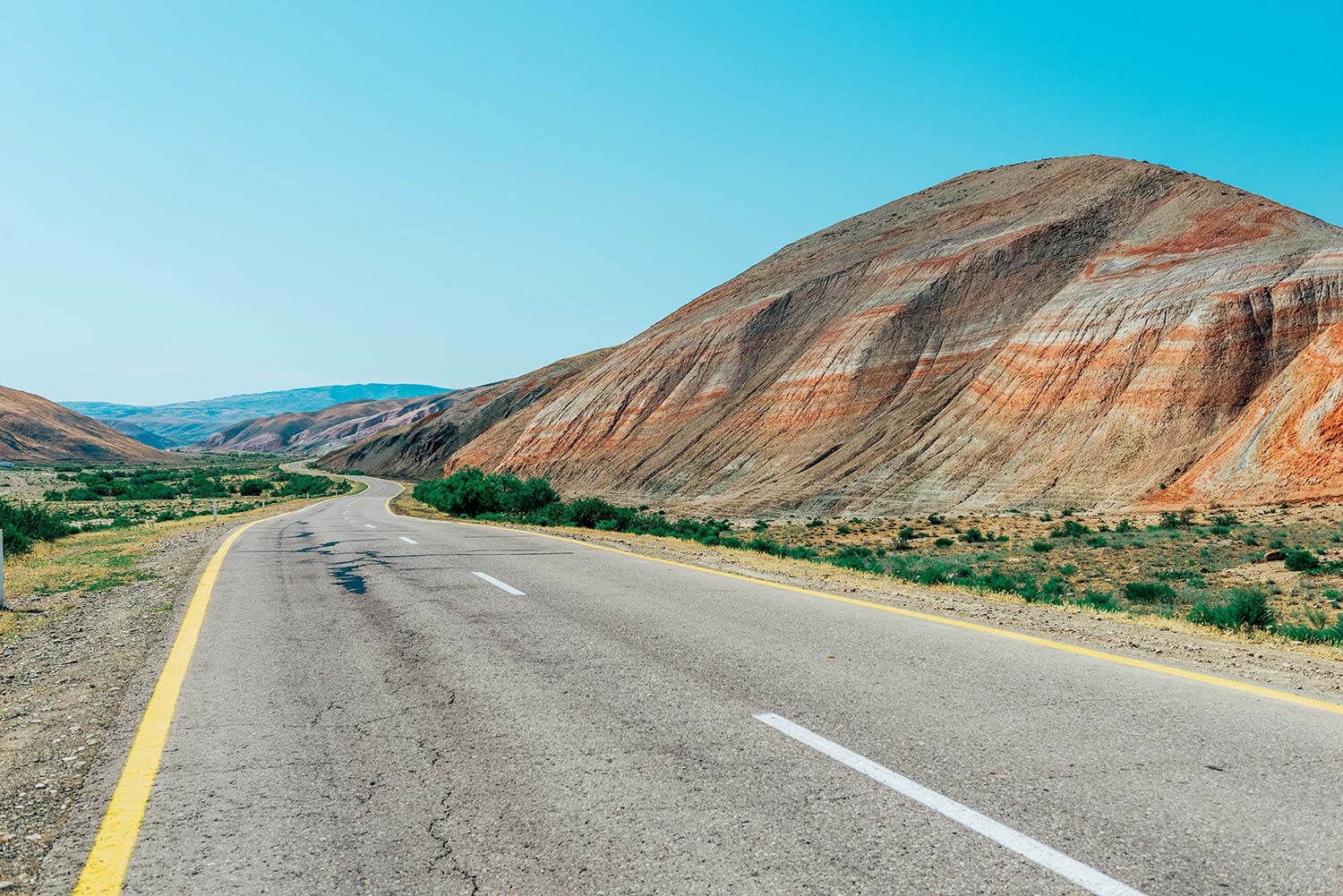
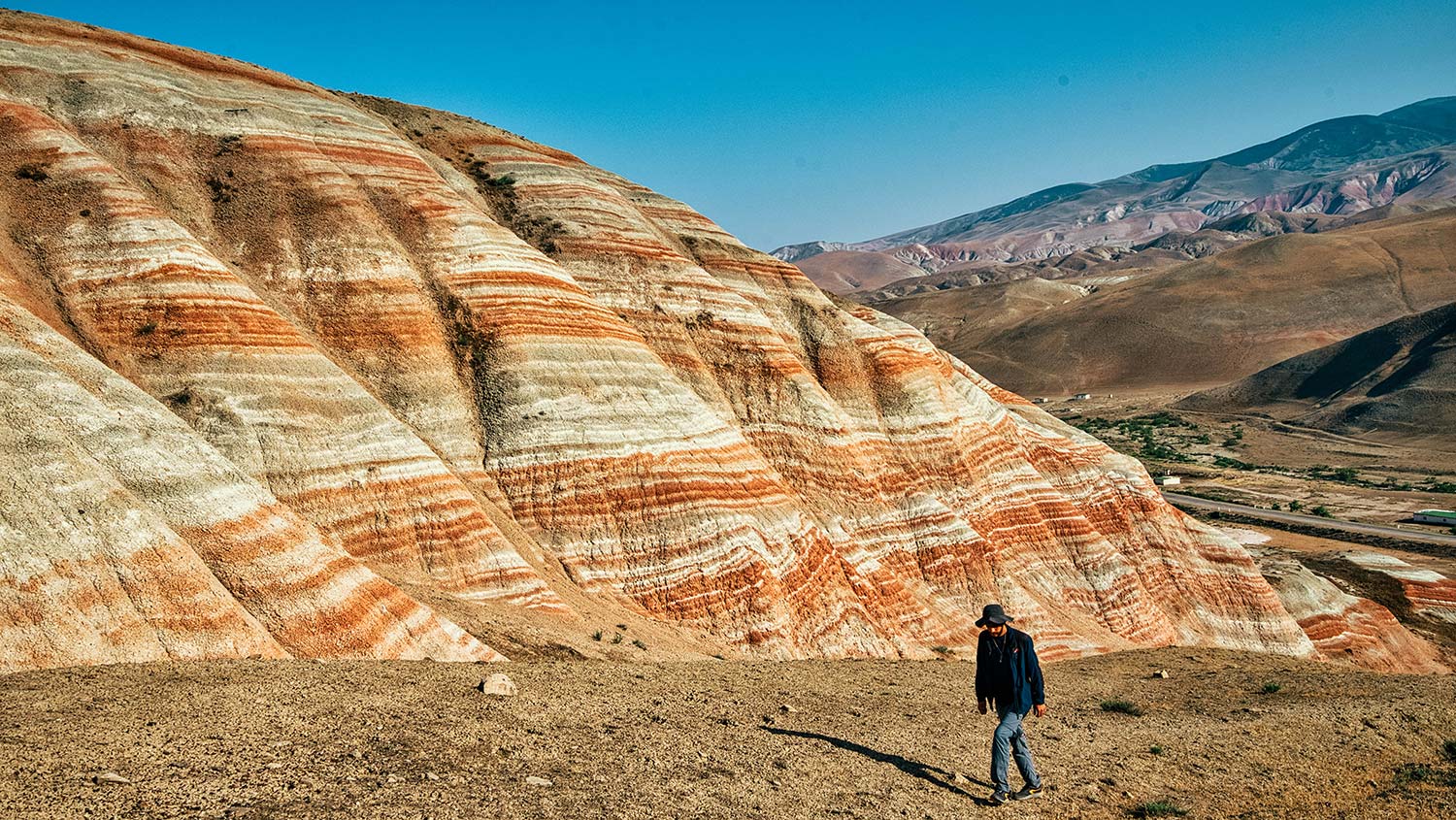
Thankfully we managed to squeeze in some more rewarding walking in the country. Returning to Baku, we passed through a valley of surreal beauty. On either side are undulating hills with psychedelic red, pink, orange and chalk-coloured stripes and swirls, known as the Candy Cane Mountains. The eye-catching colours are thought to be caused by layers of iron compounds in the rock exposed through gradual erosion.
Several small trails snaked through the mountains, and Mursal took a welcoming, more accessible route. I noticed Aboo looking closely at the ground, “I’m looking for tiny fossilised remains of the Belemnite”, he informed me after seeing my quizzical looks. The remains of this ancient squid-like creature can still be found here today. With a few Belemnites in my pocket, thanks to Aboo, we had one more stop to make, the pub in Baku, for some well-deserved drinks and a chance for me to thank the guys for taking care of me.
The culmination of this journey was not merely another hiking trail with spectacular views; it was a reminder to slow down and take in life itself. I couldn’t help but reflect on the richness of my experience. From the scenery and solitude to the physical pain, forming friendships with my guides, the warmth of the homestays, fire culture, and unique villages; they all seem to have blended effortlessly, echoing an essence only available in Azerbaijan, where the old ways still linger above the clouds.
